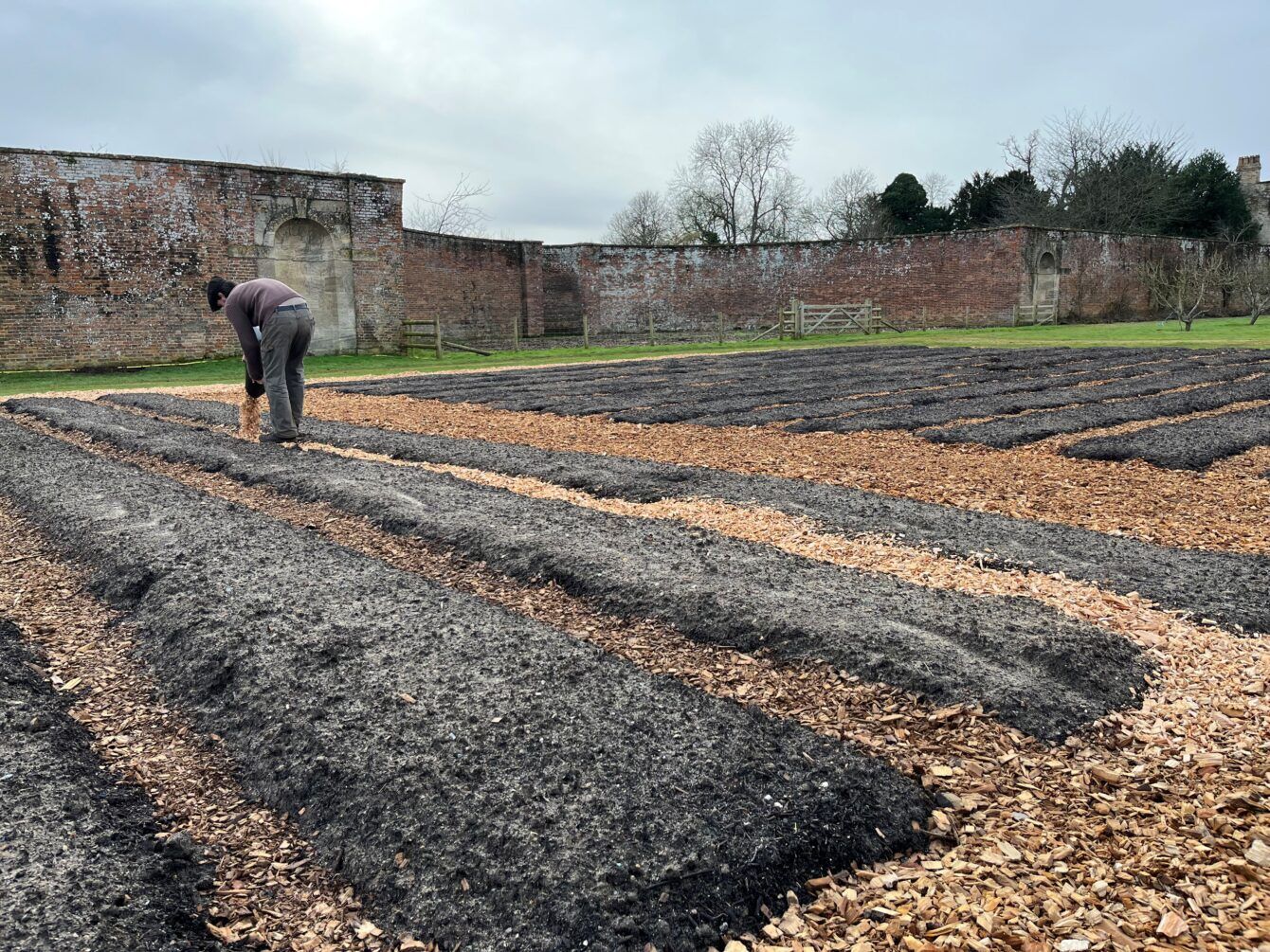Blenheim Palace doubles kitchen garden to meet demand and target self-sufficiency by 2027

Blenheim Palace’s kitchen garden, located within its 18th century Walled Garden, has been doubled in size to meet the increase in demand for homegrown produce by the Palace kitchens, with the aim that they will be self-sufficient by 2027.
The extension of the space is an exact doubling, or mirroring, of the existing Kitchen Garden, from one acre to two acres, plus three greenhouses for growing tomatoes and propagation. The new area consists of 80 new, no-dig compost beds, in between which are woodchip pathways, to allow visitors to walk and interact with the abundant vegetables, herbs and flowers that will be growing there.
As well as producing larger quantities of the vegetables and herbs already grown at Blenheim Palace, such as heritage beetroots, carrots, squash, chard and cavolo nero, the Gardens team are hoping to establish perennial vegetables such as asparagus and rhubarb – as well as niche varieties including Welsh onions and Korean mint.
The Gardens team are also looking into the possibility of any produce surplus to the Palace kitchens’ needs being sold directly to visitors, from a vegetable cart in the Walled Garden
Harrison Fannon, Vegetable Gardener at Blenheim Palace, said: “In order to meet the demand of the kitchens we need to grow more vegetables, and to achieve self-sufficiency at Blenheim in terms of fresh produce would be a big turnaround for the Kitchen Garden in three years. The ambition to provide fresh, organic vegetables to the kitchens and doing so with zero air miles and plastic packaging is a massive motivation for me.
“This may not sound like a lot of land, but the no-dig method can be extremely intensive, whereby each bed can give rise to three separate crops over the course of a year.
He added: “The original purpose of building the Walled Garden, which is one of the largest in the country, was to support the intensive production of fruits and vegetables by blocking wind, keeping out animals and intensifying the sun’s heat. We are trying to honour the original purpose of the Walled Garden and make it a working space again but with a modern perspective, using the no-dig method which is more ecologically sound.
“When I arrived here three years ago, there was very little growing in the Walled Garden, and I proposed installing a small, but intensive, no-dig garden to be run by Worthy Earth and kickstart the supply of fresh vegetables to the kitchens. This current extension is the third since we started in April 2022 and this year we are aiming to provide the majority of the kitchen’s needs.”
The work – which is due to be completed by the end of January – has involved moving 160 cubic metres of compost and top soil by wheelbarrow, which has then been raked into long, smooth rows.
“This is extremely physical work, as only with human labour can you get a neat finish,” Harrison added. “It’s pretty exhausting, but with a big team it can be hugely satisfying and potentially even enjoyable!”
ENDS
Issued on behalf of Blenheim Palace. For more information please contact Jon Perks at Cab Campaign – estate@cabcampaign.co.uk
About Blenheim Palace
Home to the Dukes of Marlborough since 1705, Blenheim Palace was designated a UNESCO World Heritage Site in 1987. Set in over 2,000 acres of ‘Capability’ Brown landscaped park and gardens, it was designed by Vanbrugh in the Baroque style and is also the birthplace of one of Britain’s most famous leaders, Sir Winston Churchill.
With over 300 years of history to share and one of the most important and extensive collections in Europe, the magnificent stately home has a rich variety of cultural highlights and an extensive programme of special events and exhibitions.
The total Estate expands into a further 10,000 acres outside of the designated UNESCO World Heritage Site and focuses on care for the land through sustainable means, pursuing net zero, the growth of the local economy, the provision of affordable homes, apprenticeship training and supported community groups as part of its ambition to make this part of Oxfordshire a fairer and better place.
About Blenheim Estate
At Blenheim Estate Land we know that our land is precious and finite, but cared for properly its benefits can be limitless. Yet today there are fresh challenges like climate change, an ageing population and increasing urbanisation.
So our approach – spanning a number of projects – needs to be as sophisticated, enduring and holistic as those issues we face.
By adopting new methods of valuing our natural capital we can view our land resources as part of an ecosystem. An ecosystem whose benefits extend to the air we all breathe, the green transport solutions that connect our communities, the physical and mental health we enjoy, and the quality of the food we consume.



